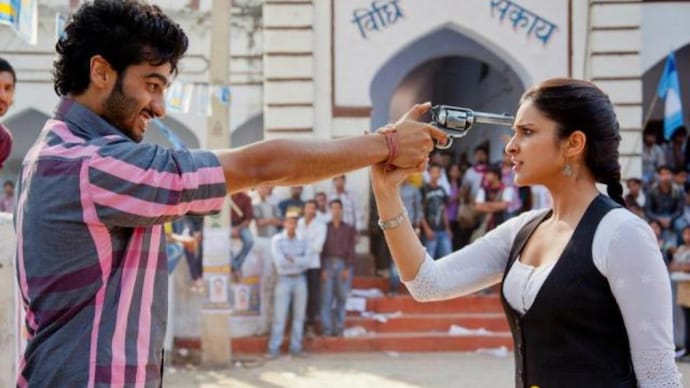Fashion Friday: How Parineeti Chopra's waistcoat and suit in Ishaqzaade was a gender-bending style statement
In Ishaqzaade, Parineeti Chopra played a feisty girl from a small town who wears the simple white churidaar with a black waistcoast, which became a gender-bending style statement.

In 2012, when Ishaqzaade released, the film introduced its audience to a new template of love stories, unlike the old romantic movies which came wrapped up in chiffon sarees, quite like their female leads.
Ishaqzaade took us straight to the heartland of rural India, to a feisty Zoya and a brash Parma. It introduced the fresh faces of Parineeti Chopra as Zoya and Arjun Kapoor as Parma.
However, as the film completes eight years in 2020, one thing that has remained with the audience is Parineeti’s intelligently designed clothes and the way they were used to depict Zoya's journey in the film. In fact, it won’t be a stretch to say, her popular white-churidaar-suit-and-
Today on Fashion Friday, as we look forward to Parineeti’s next with Arjun - Sandeep Aur Pinky Faraar - we take a look back at the actress’s character from their first film Ishaqzaade, and the way her waistcoat and suit became a gender-bending style statement.

In more than half of the scenes in the film, Parineeti is seen wearing a black waistcoat over white churidaar suit or kurti and denims. It becomes quite synonymous with her character, which is introduced as someone different from how a girl is supposed to 'behave' in a stereotypical society. The combination even becomes a symbol for her longing to join her father - an MLA, who also wears similar clothes - and have a career in politics, which she obviously cannot, as she is a girl.

Parineeti’s character has a love for guns, jeeps, hunting, taking part in college politics and Urdu too. She doesn’t limit herself in the ways the society expects her to. So, costume designers Varsha-Shilpa and director Habib Faisal’s attention to this simple detail is astounding.
Parineeti's simple costumes in the film have been used to show her character as practical and fuss-free. A statement, very different, from the way Bollywood and popular fashion brands, who label women’s fashion OTT, without a care for their comfort. Even the silhouettes used are straight-cut and easy to wear, devoid of any embellishments or heavy prints.

But, Parineeti does not always wear this simple combination. She foregoes this combination in scenes where she is falling in love with Parma or when she is expected to pertain to certain feminine standards set by society. However, she wears it back when she is fighting for her love or she is against the world fighting for her own rights. In a way, taking back control of her own life.
The film combined power dressing and femininity in a way they could cohabitate in a brilliant way. And in the process, gave us something to imitate quite easily.
ALSO READ: How Mumtaz's orange saree in Tere Mere Pyaar Ke Charche made way for our saree-gowns
ALSO WATCH: Arjun Kapoor and Parineeti Chopra open up on trolls, Namastey England and Safaigiri
